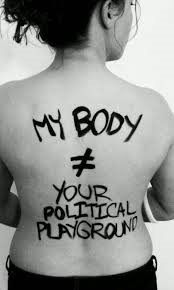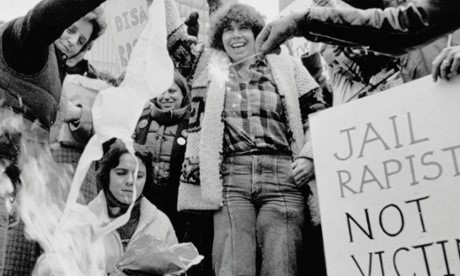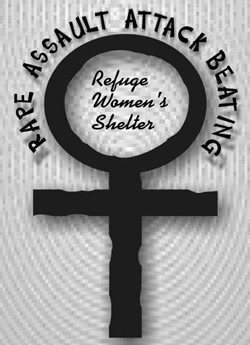|
|
 |
 |
 |
 |
 |
 |
 |
 |
 |
 |
|
Adult Education for Social Justice
‘Not the church and not the state! Women must decide our fate!
- Women raised societal consciousness by using diverse methods to promote its goal; public events, lectures, entertainment, leafleting, posters, academic writing, children's books, self-help manuals, newspaper columns, protest actions, demonstrations, marches, vigils, petitions, lobbying government agencies, employers, and institutions.
- Women were moved into action, establishing committee’s, documenting inequities, formulating proposals for improvement, and lobbying for their implementation.
- As a result various governments established advisory councils on the Status of Women.
- The advisory council played an important role in publicizing issues through its publications.
|
|
|
|
 |
|
|
|
Successes and the Changed Social Structure
Feminist ideas and the women’s movement promoted ideas across societal, organizational, and institutional boundaries and brought many changes. Some of those changes include:
 Women’s shelters formed in 1970. The Battered Women’s Shelter Movement in Canada emerged predominantly during the late 1960s and early 1970s. The second wave of the movement re-conceptualized domestic violence as a social problem. The movement was generated in large part because for women who had experienced domestic violence, “there was no place to go Women’s shelters formed in 1970. The Battered Women’s Shelter Movement in Canada emerged predominantly during the late 1960s and early 1970s. The second wave of the movement re-conceptualized domestic violence as a social problem. The movement was generated in large part because for women who had experienced domestic violence, “there was no place to go
Development of International Women’s Day – March 8. - Family Law Changes - Most progress has been made in the legal area.
Example
“In 1973 the Murdoch case, in which an Alberta farm wife was denied a half interest in the farm that she and her husband had built up together over a 25-year period because her work was seen simply as the fulfillment of her wifely duties, raised awareness about the injustices of family laws. Since that time, all provinces have reformed their family laws in the direction of greater equality between spouses, many more than once.”
- Since the '80s, a number of provincial governments have instituted agencies that collect and transmit support payments to lone parents.
- Another legal decision in the Lavell case (1973) involved an Indian woman who had lost her Indian status and privileges upon marriage to a non-Indian. The discriminatory aspects of the Indian Act were removed as of 1985. Since that time, women who lost Indian status because they married a non-Indian can reclaim their lost status, as can their first-generation children.
- The National Action Committee (NAC) was formed as a result of the frustration of women at the inaction of the federal government in regards to the recommendations of the Royal Commission. Beginning in 1972 as a coalition of 23 women's groups, by 1986 it had 350 organizational members, including the women's caucuses of the three biggest political parties. Partly funded by government grants, the NAC was widely regarded as the official expression of women's interests in Canada, and received a lot of attention from the media. In 1984 there was a televised debate on women's issues among the leaders of the contending political parties during the federal election campaign. The NAC and women's issues were receiving a lot of attention and the NAC was rapidly growing.
 The Charter of Rights and Freedoms In 1980 Prime Minister Pierre Trudeau announced his plan to banish the Canadian Constitution, and create a new Charter of Rights and Freedoms that clearly outlined various rights of Canada’s people. Women’s organizations saw this as an opportunity for Canadian women’s rights to be legally and equally represented through entrenchment in the charter. The Charter of Rights and Freedoms In 1980 Prime Minister Pierre Trudeau announced his plan to banish the Canadian Constitution, and create a new Charter of Rights and Freedoms that clearly outlined various rights of Canada’s people. Women’s organizations saw this as an opportunity for Canadian women’s rights to be legally and equally represented through entrenchment in the charter.- In 1981, the federal government creates the cabinet portfolio of Minister Responsible for the Status of Women.
-
- In 1981 The Canadian Charter of Rights and Freedoms is enacted as part of the Constitution Act.
|
- In 1982, The Federal Government passes the Employment Equity Act. It applies to federally regulated employees but not to the federal public service. Essentially, employment equity requires employers to identify and eliminate unnecessary barriers that limit the employment opportunities of historically disadvantaged groups such as visible minorities, women, and Aboriginal persons.
|
- In 1987 the Systemic discrimination in the hiring of women is found to be unlawful. A public interest lobby group supporting women's rights complains to the Canadian Human Rights Commission that CNR is guilty of systemic discrimination. A tribunal discovers that CNR has made no real effort to hire women and orders the CNR to start an employment equity program. CNR refuses and appeals its case to the Supreme Court of Canada. The CNR loses the case. Citing s.41(2)(a) of the Canadian Human Rights Act, the Supreme Court rules that the commission had the right to impose an employment equity program to break CNR's continuing cycle of systemic discrimination, which included exclusionary hiring, and promotion policies as well as the harassment of female employees.
|
- The Supreme Court of Canada decides that sexual harassment is a form of sex discrimination.
|
- During the 1960s, the women's liberation movement had increased awareness that university education often lacked a woman's perspective. The first Women's Studies programs were created as scholars attempted to re-examine history, literature, anthropology, psychology, and other subjects, and to explore the missing perspective. 1970 - The first Women's studies courses are offered at the University of Toronto, McGill University, University of Waterloo, Université de Montréal and the University of Guelph.
- Feminist leaders and medical professionals - men and women - spoke out against restrictions on abortion. A significant concern of second wave feminists in Canada was access to abortion. Until 1969, abortion was illegal, and women were dying from trying to obtain abortions outside of the law. Only one in five hospitals had the committee required to approve of the operation resulting in many women crossing the border to the United States to receive one. By 19
 70, women nation-wide mobilized to organize a cross-country abortion caravan from Vancouver to Ottawa that called for increased reproductive freedom, through increased access to abortion and birth control. The restrictive nature of the abortion law led others to challenge it, including Henry Morgantaler, a prominent Montreal doctor who attempted to establish abortion clinics. In the Morgantaler case in 1988, Canada's abortion law was struck down by the Supreme Court using the Charter of Rights and Freedoms. Bertha Wilson, the first woman on the Supreme Court, had been appointed in 1982. Section 287 of the Criminal Code states that abortion is a crime. However, section 7 of the Charter says "Everyone has the right to life, liberty and security of the person and the right not to be deprived thereof except in accordance with the principles of fundamental justice." Henry Morgentaler, who was trying to establish abortion clinics, forced the courts to rule on this issue, and in 1988 the Supreme Court ruled that section 287 of the Criminal Code was of no force or effect. 70, women nation-wide mobilized to organize a cross-country abortion caravan from Vancouver to Ottawa that called for increased reproductive freedom, through increased access to abortion and birth control. The restrictive nature of the abortion law led others to challenge it, including Henry Morgantaler, a prominent Montreal doctor who attempted to establish abortion clinics. In the Morgantaler case in 1988, Canada's abortion law was struck down by the Supreme Court using the Charter of Rights and Freedoms. Bertha Wilson, the first woman on the Supreme Court, had been appointed in 1982. Section 287 of the Criminal Code states that abortion is a crime. However, section 7 of the Charter says "Everyone has the right to life, liberty and security of the person and the right not to be deprived thereof except in accordance with the principles of fundamental justice." Henry Morgentaler, who was trying to establish abortion clinics, forced the courts to rule on this issue, and in 1988 the Supreme Court ruled that section 287 of the Criminal Code was of no force or effect.
|
|
|
|
“Sisterhood is powerful.” Rosemary Brown, politician, activist |
|
|
|
|
Check out our other pages on the Women's Movement by clicking on the related topic on the navigation bar to the left or on one of the links below:
Influences
Organizations
Social Justice
|
|
|
|